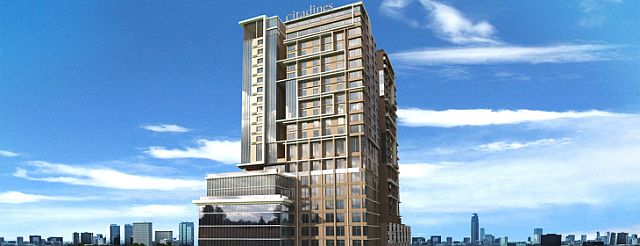
Colliers research head Julius Guevara says developers should aim for condotels or serviced residences, such as the proposed Citadines.
Given the slowdown in the vertical residential segment because of oversupply concerns, a real estate services provider said it would be best for condominium developers to look at condotels, serviced apartments and other condominium units for the leisure market.
Another option is for developers to really identify their niche market, said Julius Guevara, director and head of research of Colliers International Philippines.
“Is it students? Is it business travelers? Or expats? Where do you want to position yourself? Then design (your project) according to your target market,” he told Cebu Daily News at the sidelines of a real estate forum organized by Colliers yesterday.
For end-users, Guevara said now would be a good time to buy a housing unit, especially if interest rates can be locked because of the slowdown while has led to all-time low take-up rates and launches in the horizontal residential segment.
In his presentation during the forum, Guevara said the slowdown is apparent in Metro Cebu’s residential condominium market due to oversupply concerns.
The year-on-year take-up rate for vertical projects went down by 4.8 percent to 4,855 condominium units in 2015 from 5,100 units in 2014. Launches also decreased to 5,200 units in 2015 from 5,300 units in 2014.
“The decline indicates that developers are holding back,” Guevara told the forum.
Leisure-oriented developments, on the other hand, led sales in 2015, he said.
Thus, it would be best to position condominium developments towards the leisure market.
“It’s not necessary that they have to be close to the beach. It can still be a city location as long as it could be positioned as a condotel, wherein you manage the rental of the property for the benefit of the investor,” Guevara told CDN.
He cited Citadines, an international serviced residence brand that will be part of a mixed-use complex that will soon rise at the former site of Baseline Restaurant in Cebu City.
“There’s opportunity for that, especially in the CBD (central business district) locations as long as it’s conveniently located, it could cater to business travelers who are looking for medium-to long-term stay,” he added.
The horizontal segment was also at an all-time low, as the take-up rate dropped by about 50 percent to 2,500 units in 2015 from 5,400 in 2014 while launches went down to 1,700 units last year from 2,700 in 2014.
“This might be attributed to the type of developments launched in the year, which are concentrated in the higher income levels, making it less affordable compared to condos,” he said.
The location could also be a factor, considering that a lot of projects that were launched were far from urban centers.
The slowdown is also apparent in the rise in vacancy rates in Metro Cebu, which are seen to further increase in the coming years because of the volume of projects that are under construction.
Guevara said an average of 5,700 units are programmed to be completed annually for 2016 to 2018, with the highest volume seen to be delivered this year at about 9,000 units.
Because of the oversupply, Guevara said the market might see a correction in terms of rental.
“Rents would not grow as much or plateau. At the end of the day, yield would be low,” he said.
He said, however, there remains a lot of interest in Cebu among foreign investors.
“Cebu is still in their radar, especially among the Japanese and Koreans. Some of them are looking at investing in multiple units while some are looking for partners,” he added.
In the office supply market, Guevara said the business process outsourcing (BPO) industry is seen to continue to define the market.
Around 80 percent of the new supply is taken by BPO companies, he said.
Cebu is still a preferred outsourcing destination not only because of the presence of infrastructure, but also because of the level of education and urbanization here, Guevara said.
Although most of the BPO activities are still in Metro Manila, Metro Cebu has captured about 7 percent of the market. The outsourcing sector here currently employs around 100,000 workers.

